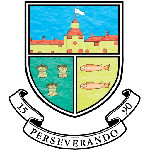Business
| Mrs G Lawrence (Head of Department) | glawrence@conyers.org.uk |
| Mr L Matterson | lmatterson@conyers.org.uk |
Key Stage 5 Curriculum Map
Curriculum Intent
The course aims to develop students who have an interest in Business in the real world and the ability to work in large corporations understanding the demands of the corporate world. Students will gain the ability to analyse business performance using a range of key performance indicators using both theoretical models and quantitative tools.
Key Knowledge and Skills
AO1: Demonstrate knowledge of terms, concepts, theories, methods and models to show an understanding of how individuals and organisations are affected by and respond to issues.
AO2: Apply knowledge and understanding to various business contexts to show how individuals and organisations are affected by and respond to issues.
AO3: Analyse issues within business, showing an understanding of the impact on individuals and organisations of external and internal influences.
AO4: Evaluate quantitative and qualitative information to make informed judgements and propose evidence-based solutions to business issues.
Sequence Discussion
Using a two teacher delivery model in Year 12, 3.1 , 3.2 and 3.3 are run in parallel with 3.5. The rationale for this is that 3.5 is arguably the most complex aspect of Year 1 – the use and interpretation of financial performance in business and the section that students find most challenging. However understanding of 3.5 through practice and application is crucial to success across all sections of the course in Year 12 and Year 13 as business decisions taken in for example Marketing or Human Resources are underpinned by financial understanding from 3.5. Quantitative skills such as interpreting and analysing data must represent a minimum of 10% of the overall A-level marks. 3.4 is also a unit with some demanding quantitative analysis and this is studied alongside 3.3 and 3.4 preceding an end of year mock exam on all content. Year 13 content is delivered by one member of staff. The theme of strategic decision making builds on the study of decision making in the functional areas (Marketing, HRM, Operations, Finance). This involves the students learning in sequence the need for businesses in a range of contexts to understand where they currently are in terms of their business strategy, the possible options businesses can consider, factors that influence these strategic choices and finally how to manage the changes that businesses implement. Year 13 contains a number of additional more complex business models and theories that need to be understood culminating with 3.10 focussing on managing change with regards to the organisational culture and models of implementing change.
Year 12
Half Term 1
3.1 What is Business?
3.5 Decision Making to improve financial performance
Half Term 2
3.2 Managers, Leaders and Decision Making
3.5 Decision Making to improve financial performance
Half Term 3
3.3 Decision Making to improve marketing performance
3.5 Decision Making to improve financial performance
Half Term 4
3.6 Decision Making to Improve Human Resource Performance
3.4 Decision Making to Improve Operational Performance
Half Term 5
3.6 Decision Making to Improve Human Resource Performance
Half Term 6
Year 1 Consolidation and Preparation for End of Year Assessment
Year 13
Half Term 1
3.8 Choosing Strategic Direction
Half Term 2
3.7 Analysing the strategic position of a business
Half Term 3
3.9 Strategic Methods: how to pursue strategies
Half Term 4
3.10 Managing Strategic Change

